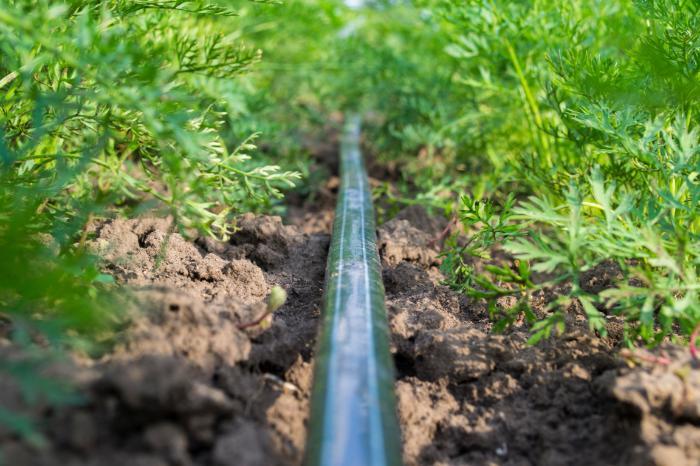04 March 2025
More Crops, Less Water: A Case for Smart Irrigation

Graham Fallon, Technician at Teagasc College of Amenity Horticulture, National Botanic Gardens, highlights the urgent need for smarter water use in Irish agriculture. Internet of Things-driven irrigation can cut waste, boost yields, and help ensure a sustainable future for horticulture.
Water is the backbone of all life, humans rely on water more heavily than many other mammals, stimulating the development of new and novel methods for sourcing and conserving it. From ecosystems to farms, our use of water in horticulture and agriculture has veered down an unsustainable path. In Ireland, when rainfall is plentiful, water scarcity feels distant, but our mindset must shift, with water abstraction for agriculture consuming 70% of our overall freshwater. Coupled with the projected global population increase, expected to rise 33% by 2050, demand for fresh water will surge another 15%, according to the Central Statistics Office. Ireland’s population alone is set to jump from 5 million in 2020 to 6 million by 2051, a higher population means more crops, and more crops mean more water.
Efficient water use in horticulture and agriculture isn’t simply a passing trend, it represents a profound and obligatory transformation in how we cultivate our crops by safeguarding our resources, cutting costs, lowering carbon emissions, and protecting our rivers and estuaries. Every litre saved means less energy used in pumping and treating water, aiding a reduction in our greenhouse gas emissions. Precision irrigation is key to reducing water use, especially for shallow-rooted edible crops that require careful watering to thrive. Consequently, non-optimal irrigation has been shown to reduce nutrient content in crops like kale.
Enter the Internet of Things (IoT), an interconnected network of physical devices that communicate with each other through sensors and software. Teaming this concept with long-range (LoRa) radio modulation and a low-power, wide area networking protocol (LoRaWAN) allows long-range wireless connectivity of devices to the internet, managing communication between devices. This approach can offer low-cost, efficient solutions, enabling wireless sensors to feed real-time data on soil moisture and nutrients to producers. Live data empowers producers to irrigate exactly when and where needed, cutting waste and boosting yields. AI incorporation pushes this further, integrating weather forecasts and plant growth models enabling crop specific fine-tuned water use.
The path forward is clear for Irish horticulture and agriculture, we must adopt smart water technologies wherever feasible. Producing more isn’t enough, we need to produce smarter to accommodate our ever growing horticulture and agricultural sectors. Smart water management is no longer a future ambition, it’s yesterday’s necessity.
